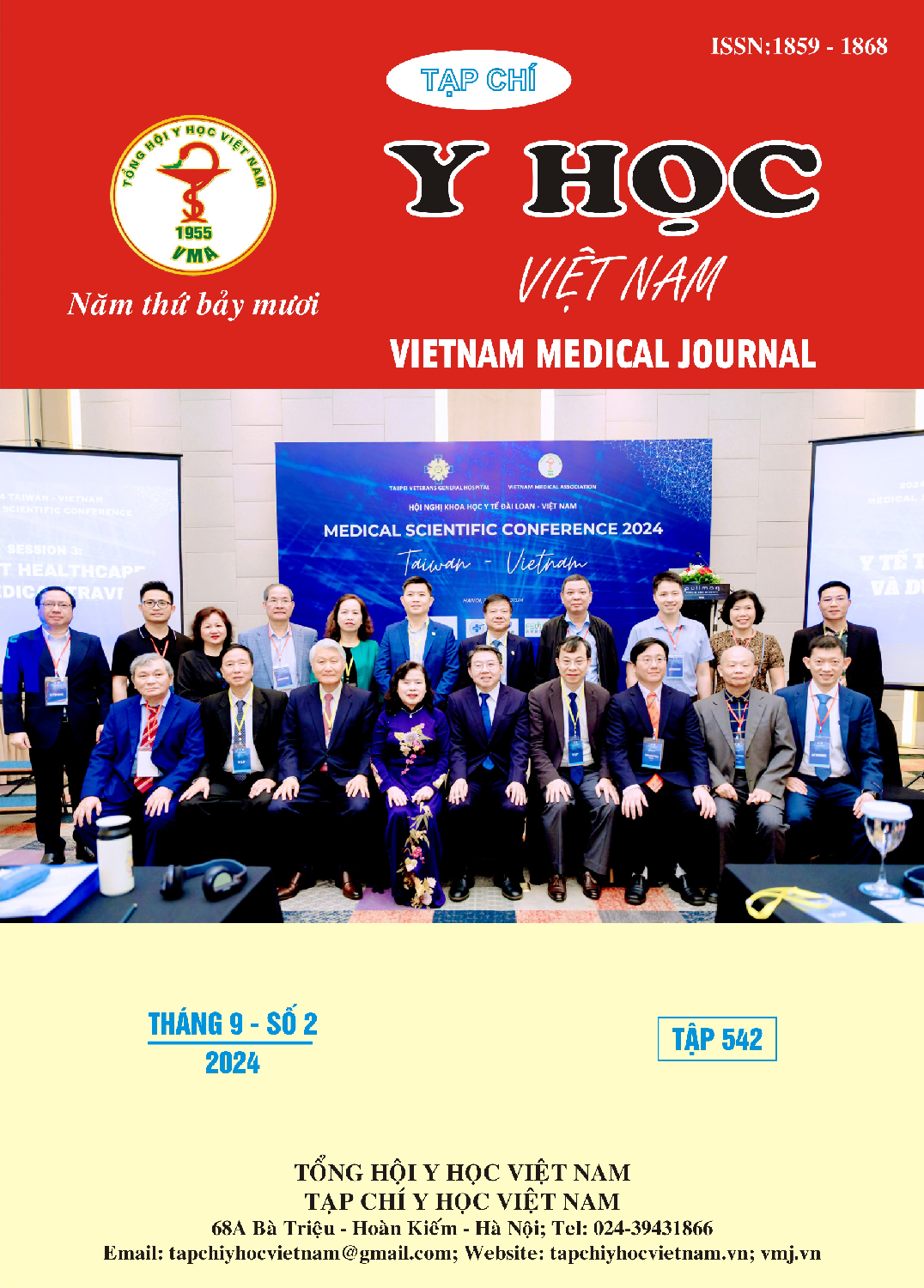CÁC YẾU TỐ LIÊN QUAN ĐẾN LOÃNG XƯƠNG, NGUY CƠ GÃY XƯƠNG Ở NGƯỜI CAO TUỔI CÓ SỬ DỤNG THUỐC ỨC CHẾ BƠM PROTON
Nội dung chính của bài viết
Tóm tắt
Đặt vấn đề: việc sử dụng thuốc ức chế bơm proton và bệnh loãng xương là hai trong nhiều tình trạng phối hợp thường gặp ở người cao tuổi. Mục tiêu: khảo sát mối liên quan giữa thời gian, liều sử dụng thuốc ức chế bơm proton và loãng xương, nguy cơ gãy xương ở người cao tuổi có sử dụng thuốc ức chế bơm proton tại phòng khám Lão khoa và phòng khám Cơ Xương Khớp của Bệnh viện Đại học Y Dược thành phố Hồ Chí Minh. Phương pháp: nghiên cứu mô tả cắt ngang được thực hiện trên 220 bệnh nhân từ 60 tuổi trở lên, có sử dụng liên tục thuốc ức chế bơm proton (PPI) ≥ 4 tuần trong vòng 6 tháng đến khám tại Bệnh viện Đại học Y Dược thành phố Hồ Chí Minh từ tháng 12 năm 2022 đến tháng 6 năm 2023. Kết quả: khi thời gian sử dụng thuốc ức chế bơm proton tăng lên 1 tuần từ tuần thứ 10 sẽ làm tăng nguy cơ loãng xương lên gấp 1,088 lần (khoảng tin cậy 95% là 1,017 – 1,165) với p = 0,015. Chưa ghi nhận mối liên quan giữa liều sử dụng của thuốc Esomeprazole, Pantoprazole, Rabeprazole và loãng xương ở người cao tuổi. Chưa ghi nhận sự mối liên quan giữa thời gian sử dụng thuốc ức chế bơm proton, liều sử dụng Esomeprazole, Pantoprazole, Rabeprazole và nguy cơ gãy xương cao ở người cao tuổi. Kết luận: có mối liên quan giữa thời gian sử dụng thuốc ức chế bơm proton với nguy cơ loãng xương ở người cao tuổi.
Chi tiết bài viết
Từ khóa
người cao tuổi, loãng xương, nguy cơ, gãy xương, thuốc ức chế bơm proton.
Tài liệu tham khảo
2. C. Reyes, F. Formiga, M. Coderch, et al. Use of proton pump inhibitors and risk of fragility hip fracture in a Mediterranean region. Bone. 2013;52:557-61.
3. J. H. Park, J. Lee, S. Y. Yu, et al. Comparing proton pump inhibitors with histamin-2 receptor blockers regarding the risk of osteoporotic fractures: a nested case-control study of more than 350,000 Korean patients with GERD and peptic ulcer disease. BMC Geriatr. 2020;20:407.
4. J. J. Kim, E. J. Jang, J. Park, H. S. Sohn. Association between proton pump inhibitor use and risk of fracture: A population-based case-control study. PLoS One. 2020;15:e0235163.
5. J. R. Lewis, D. Barre, K. Zhu, et al. Long-term proton pump inhibitor therapy and falls and fractures in elderly women: a prospective cohort study. J Bone Miner Res. 2014;29:2489-97.
6. J. W. Kim, S. Park, J. Y. Jung, et al. Prevalence and Factors of Osteoporosis and High Risk of Osteoporotic Fracture in Patients with Ankylosing Spondylitis: A Multicenter Comparative Study of Bone Mineral Density and the Fracture Risk Assessment Tool. J Clin Med. 2022;11.
7. K. M. Aasarod, M. P. Mosti, M. T. Finstad, et al. Do patients with gastroesophageal reflux disease exhibit compromised bone quality prior to proton pump inhibitor therapy? Bone Rep. 2021;14:101095.
8. M. Zwart, R. Azagra-Ledesma, M. Saez, et al. Predictive capacity of FRAX in a spanish region with a hip fracture rate close to the national mean. BMC Musculoskelet Disord. 2023;24:577.
9. R. Gingold-Belfer, Y. Beloosesky, A. Amara, et al. Different effects of chronic omeprazole use on osteoporotic fractures rate in the elderly. Br J Clin Pharmacol. 2023.
10. S. W. Lai, C. H. Lin, C. L. Lin, et al. Proton pump inhibitors therapy and the risk of hip fracture in older people in Taiwan. Eur Geriatr Med. 2018;9:169-174.


